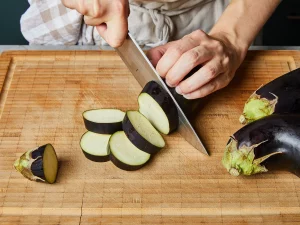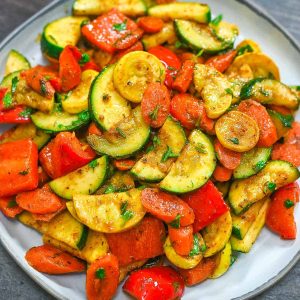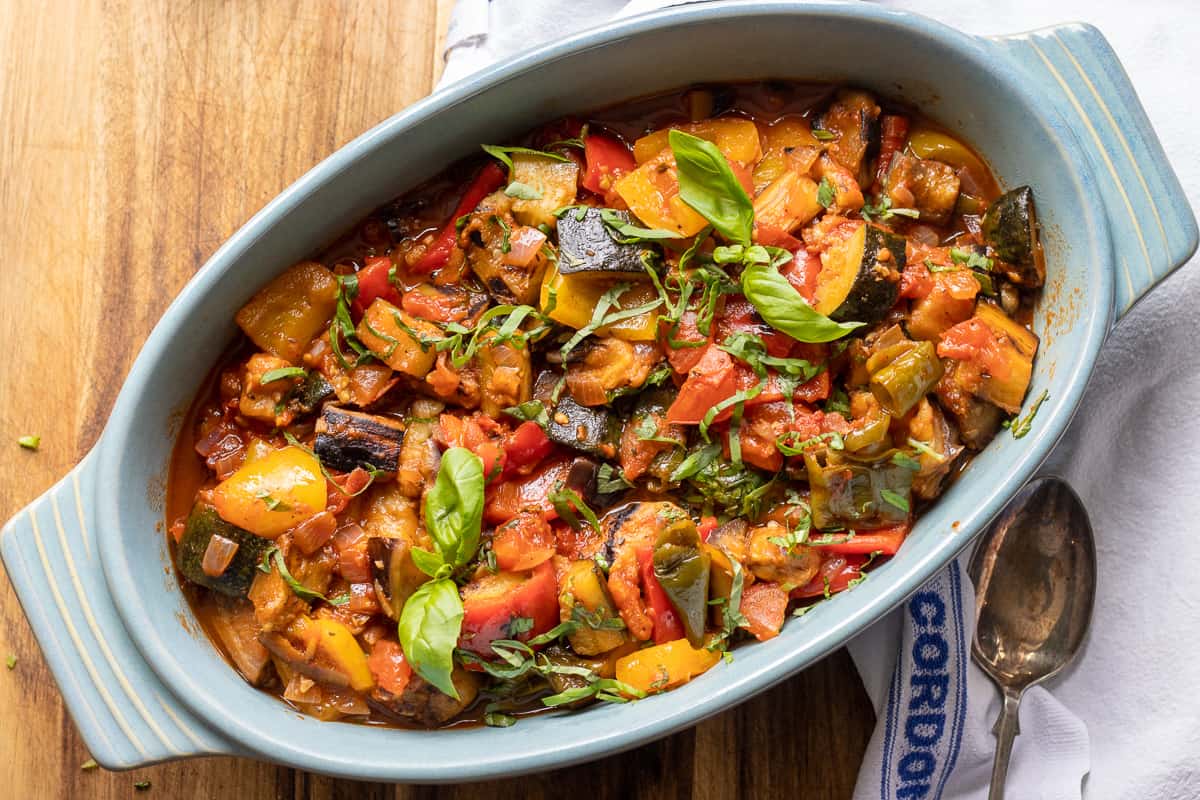Ratatouille, a vibrant and flavorful Provençal vegetable stew, is a cornerstone of French cuisine. This isn’t just any ratatouille recipe; it’s a celebration of the simple, rustic dishes that define the region’s culinary heart. We’ll delve into the traditional techniques that make this dish sing, ensuring your ratatouille is bursting with the intense, earthy flavors of summer vegetables. Unlike many simplified versions, this recipe emphasizes slow cooking to allow the vegetables to melt into a harmonious blend of textures and tastes.nn
The origins of ratatouille can be traced back to the poor communities of the Provence region in southeastern France. Originally a peasant dish, it has since risen to international acclaim, featuring in countless restaurants and home kitchens worldwide. What sets this recipe apart is the precise attention to the vegetable preparation and the careful layering of flavors during the cooking process. We’ll explore the importance of using high-quality ingredients and proper cooking methods to achieve the perfect balance of sweetness, acidity, and herbal notes. This authentic French ratatouille recipe offers an unforgettable culinary experience, a taste of Provence in every bite. nn
This classic French ratatouille recipe boasts a rich and complex flavor profile. The sweetness of the eggplant, zucchini, and bell peppers is beautifully balanced by the acidity of the tomatoes and the subtle bitterness of the olives. Fresh herbs like thyme, rosemary, and basil add an aromatic complexity, while garlic and onions provide a savory base. The slow cooking process concentrates these flavors, creating a deeply satisfying and unforgettable dish. To ensure success, follow the instructions carefully, paying particular attention to the timing and the careful layering of the vegetables. This recipe will guide you step by step, helping you achieve a delicious, restaurant-quality ratatouille in the comfort of your own home. nn
Mastering this French ratatouille recipe is about more than just following the steps; it’s about understanding the principles of Provençal cooking. We’ll explore tips and tricks for getting the best results, from choosing the ripest vegetables to understanding the optimal cooking time for each ingredient. Prepare to be transported to the sun-drenched fields of Provence with every spoonful of this vibrant, flavorful, and undeniably authentic dish. Get ready to experience the true essence of French home cooking.
Ingredients
- 1 large eggplant, diced
- 2 zucchini, diced
- 2 bell peppers (red and yellow), diced
- 1 large onion, chopped
- 4 cloves garlic, minced
- 28 ounces canned crushed tomatoes
- 1 (14.5 ounce) can diced tomatoes, undrained
- 1/2 cup olive oil
- 1 cup fresh basil leaves, chopped
- 1/4 cup fresh thyme leaves
- 2 tablespoons fresh rosemary, chopped
- 1/2 cup pitted Niçoise olives, halved
- Salt and freshly ground black pepper to taste
Instructions
-
Preparing the Eggplant
Salt the diced eggplant and let it sit for 30 minutes to draw out excess moisture. Pat dry with paper towels.

-
Sautéing the Vegetables
Heat olive oil in a large, heavy-bottomed pot or Dutch oven over medium heat. Add the onion and cook until softened, about 5 minutes. Add the garlic and cook for another minute until fragrant.

-
Building the Ratatouille
Add the eggplant, zucchini, and bell peppers to the pot. Cook, stirring occasionally, until slightly softened, about 8-10 minutes. Stir in the crushed and diced tomatoes, basil, thyme, rosemary, olives, salt, and pepper.
-
Simmering to Perfection
Bring the mixture to a simmer, then reduce heat to low, cover, and cook for at least 45 minutes, or up to 1 hour, stirring occasionally, until the vegetables are tender and the flavors have melded.
-
Serving the Ratatouille
Taste and adjust seasoning as needed. Serve warm or at room temperature. Enjoy!
Nutrition Facts
- Calories: 250
- Protein: 5g
- Fat: 18g
- Carbohydrates: 15g
- Fiber: 5g
Recipe Video
Frequently Asked Questions
While fresh tomatoes are ideal for the best flavor, you can substitute with 28 ounces of canned crushed tomatoes. Just be sure to drain off any excess liquid before adding them to the pot.
Niçoise olives are traditionally used in ratatouille, but Kalamata or Castelvetrano olives will also work well. Choose olives that are not overly salty.
Yes! Ratatouille tastes even better the next day. Prepare it a day or two in advance and store it in an airtight container in the refrigerator. The flavors will meld and deepen.
Ratatouille is incredibly versatile. It's delicious served as a side dish with grilled meats, fish, or poultry. It also pairs well with crusty bread, polenta, or couscous.
Salt the sliced eggplant and let it sit for at least 30 minutes to draw out excess moisture. Then pat it dry with paper towels before adding it to the pot. This crucial step prevents sogginess.

